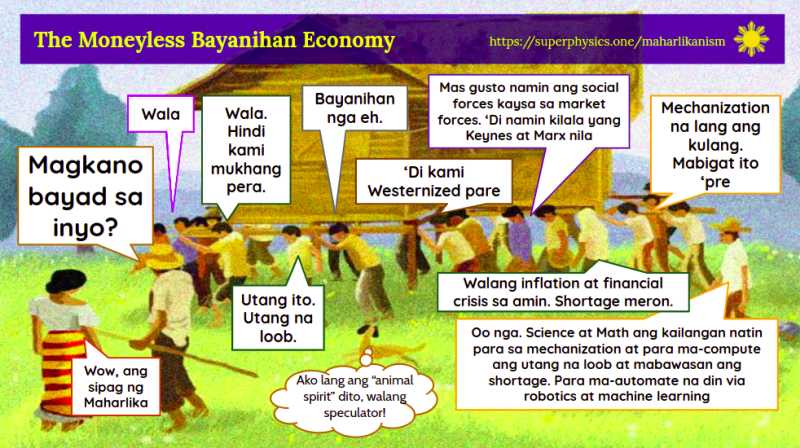Barter in Maharlika
Table of Contents
Maharlika was no stranger to natural disasters such as typhoons and earthquakes. This was proven in the practices and myths of the country:
The first man came out of the one bamboo and the first woman from the other. These, they say, married with the approval of Linog, which is the earthquake.
William Henry Scott
Barangay
Some old men were renowned for the accuracy of their weather forecasts. They predicted storms, their severity, and the flooding that would follow, three or four days in advance, or even a week, by judging from cloud formations and the color of the skies, sun, and moon.
William Henry Scott
Barangay
Moreover, the natural disasters were worsened by man-made disasters like piracy and slave-trading:
The Spaniards considered any such venturing datus as simple pirates. They defined ‘mangayaw’ itself as piracy—armed robbery at sea.
William Henry Scott
Barangay
This is different from European countries which were safe, fertile, had fewer disasters, and milder slavery policies.
An Economy Built for Crisis
Many large civilizations had difficult environments similar to Maharlika:
- Mongolia
- Arabia
- Inca
Like Maharlika, such countries did not have gold mines and so transacted with barter.
Raja Calanao [of Zamboanga del Norte] showed me certain large valleys, making me a sign that the gold there was as abundant as the hairs of their heads. But they have no iron with which to dig it, and they do not dare to go to the trouble [to get it].
Antonio Pigafetta
The Maharlikan traders assemble in crowds and carry the goods away with them in baskets. Even the foreign merchants do not know the Maharlikan traders and cannot distinguish them, there will be no loss. The native traders will bring those goods to other islands for barter. It will take 8-9 months for them to return. They then repay the foreign merchants with what they had obtained for the goods.
Chau Ju Kua
Chun Fan Chi
Maharlika used Trust, Inca used Strings
Maharlikans used a trust system which was limited and not scalable. This limited the growth of the external trade to only the Luzon and Visayas, preventing from Maharlika from spreading or having a large economy, unlike Java or Cambodia.
However, this made the Maharlikan economy resilient. Cambodia and Java, on the other hand, had frequent wars between Thailand and Malaysia respectively.
The barter system of the Inca and Egyptian empires was more scalable. It used granaries as the store of grain-value and ledgers as the tool of trade.
- The Inca used quipu as the ledger
- The Egyptians used papyrus
We scale the barter system of Maharlika by using points on a web server as the tool of trade. This creates a points-based system as an implementation of the bayanihan economy.

Alipin Namamahay or Servitude as Debt Payment
Non payment of debts would lead to servitude as aliping namamahay.
This was common in all countries before commercialization was spread by the European colonial system.
If any of your fellow Israelites become poor and sell themselves to you, do not make them work as slaves. They are to be treated as hired workers or temporary residents among you. They are to work for you until the Year of Jubilee. Then they and their children are to be released
In the rival commercial system, these are now called ‘kasambahay’ who are maids who live in the master’s house to get the benefits of having a house with electricity, water, internet, proximity to stores and businesses, etc.
The solution of Maharlikanism to debt is to use:
- Moneyless points-valuation
This removes the time value of money, discarding interest rates. This prevents debt slavery and economic injustice by the creditor.
- Points Banking
This checks the actual productivity of the debtor before getting the debt. This prevents the creditor from being scammed and ensures that the creditor will get something back.
Failure to pay will make the debtor go back to the commercial system which has the economic problems that we have today.